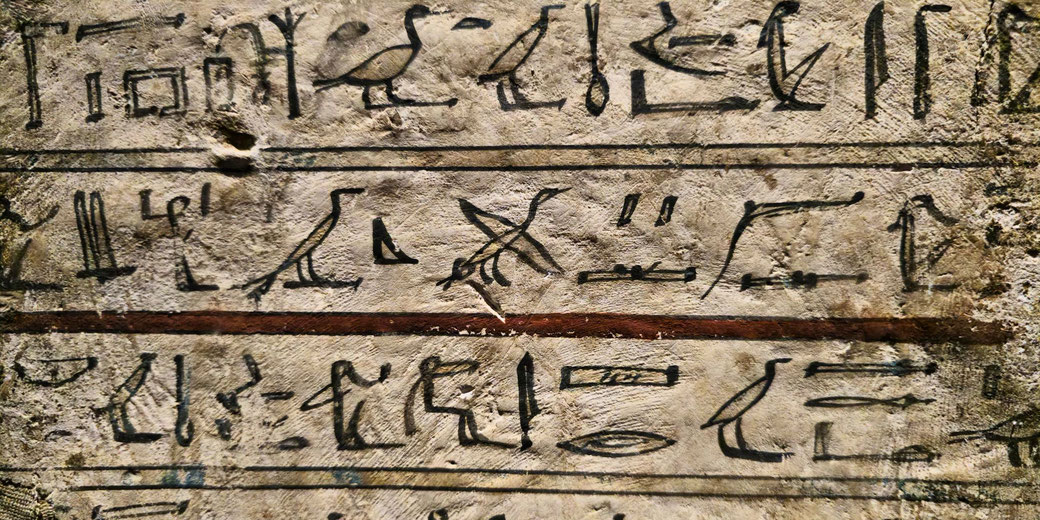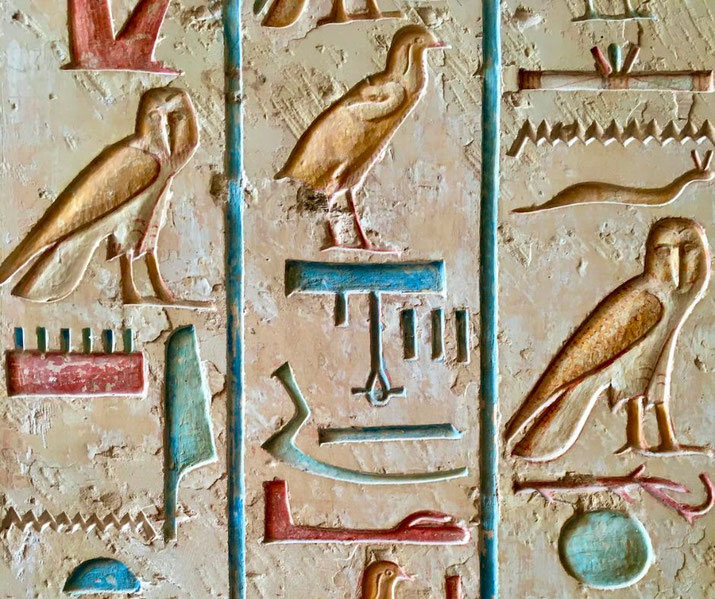How do Egyptian hieroglyphs work?

Prepare to start a journey through time as we explore the mysterious world of Egyptian hieroglyphs. These symbols have shared the stories of a people who lived thousands of years ago.
Over many centuries of Egyptian history, they were painted and carved on the walls of ancient tombs and temples.
But , what do these symbols mean and how can you begin to understand and even read these ancient writings?
Understanding hieroglyphs
Egyptian hieroglyphs are a way of writing used by the ancient Egyptians. They were used for over 3,000 years, from about 3100 BCE during the Early Dynastic Period until the 4th century CE.
During that time, their form and use evolved to meet different needs.
Unlike English, which is read from left to right, hieroglyphs can be written in rows or columns, and can be read from right to left or left to right.
The direction you read is determined by which way the figures face.
The Rosetta Stone, which was found in 1799 near the town of Rosetta (now called Rashid) in Egypt, used three scripts (Greek, Demotic, and hieroglyphic).
This stone finally enabled French linguist Jean-François Champollion to decipher and read the hieroglyphs in 1822, which opened up a whole new chapter in understanding ancient Egyptian writing.
The basic elements of hieroglyphs
To grasp how these symbols function, we can break them down into three categories:
Egyptian hieroglyphs use three kinds of signs: phonograms, logograms, and determinatives.
Phonograms are signs that stand for sounds, much like letters in our alphabet.
They can be single signs for one sound (i, a, or d); signs for two sounds (un, per, or in); or signs for three sounds (nfr, topj, or wenn).
In contrast, logograms are signs that stand for whole words or parts of words, like simple pictures in a modern language.
For example, the hieroglyph of an owl stands for the sound "m". When used as a logogram, it can also mean “owl.”
Finally, Ddterminatives are signs that give more information about the words that go with.
Instead of creating a sound, they simply clarify meaning of a word to help give context.
For example, a sign of a man next to a word may show that the word relates to a man or men.

How to read hieroglyphs
Reading hieroglyphs needs some knowledge of the setting, ancient Egyptian life, and the way the Egyptians used images as a language. To start, follow these simple steps:
Find the direction of the text:
Look at which way the signs face. If they face right, you read from right to left. If they face left, you read from left to right. In columns, read from top to bottom.
Find the phonograms:
Start by looking for the single sound signs, as they are the easiest. There are 24 of these.
Find the logograms:
These often look like the object they represent. They may have a small mark afterward to show they are logograms.
Watch for determinatives:
They are not spoken when you read out the hieroglyphs, but they are important for understanding the meaning of the sentence.
Find the two-sound and three-sound signs:
These are harder to spot because they are more abstract. As you gain skill, you will learn to spot and understand them better.
This is just the very basics of learning how to read ancient Egyptian writing. If you'd like to dig deeper, here are the best resources I have used:
- How to Read Egyptian Hieroglyphs: A Step-by-Step Guide to Teach Yourself by Mark Collier and Bill Manley
Learning Egyptian hieroglyphs takes patience, practice, and curiosity. However, with continued effort, you will quiclky gain insight into this writing system.
There is much more to discover, but these basics will give you a solid start as you explore further.
What do you need help with?
Download ready-to-use digital learning resources
Copyright © History Skills 2014-2025.
Contact via email
With the exception of links to external sites, some historical sources and extracts from specific publications, all content on this website is copyrighted by History Skills. This content may not be copied, republished or redistributed without written permission from the website creator. Please use the Contact page to obtain relevant permission.





